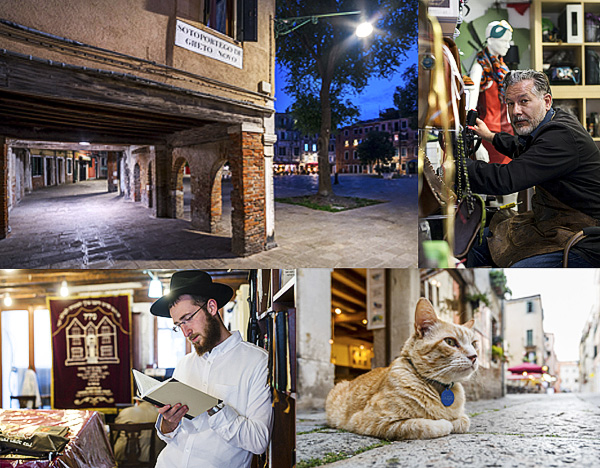Half a millennium ago, Venice decided that the Jews needed to reside in a secluded area, away from
the city, the “Ghetto Nuovo” (New Ghetto): the first ghetto was born, a term and institution sadly
put into practice in the rest of the world.

Until today, this area presents itself like an Island, accessible only by two bridges, once guarded by
robust gates, because the residents were permitted to leave only during daytime, marked
distinctively.
Nonetheless, these restrictions did not hinder the population to grow, which forced the
authorities to enlarge the Ghetto Nuovo, adding the Ghetto Vecchio (old ghetto) in 1541 and the
very new one in 1633.
To gain sufficient living space it was also necessary to proceed by expanding
the buildings vertically – and still to date the buildings of the Ghetto are the tallest in Venice.
Today, its residents are just a few hundred people, but the Ghetto of Venice remains one of the most
characteristic and unique spots of the city. 500 years later the Jewish community is keeping their
role within the city’s cultural life vital, maintaining religious traditions and offering their artistic and
cultural patrimony to visitors from around the world.
Regardless it being just within a few minutes reach from the train-station the flow of tourists hardly
touches this area. Due to this, when entering the Ghetto you seem to be glancing into a world apart,
where rituals and habits have remained those from once upon a time. Here you can find the bakery
with the best sweets of Venice, products created abiding to the kosher kitchen-rules; a pair of
restaurants offering traditional Jewish dishes and best wines from Israel; and here is where one of
the only two female gondoliers works. In the afternoon kids meet to play on the square of the
Ghetto Nuovo, whilst mothers and grandmothers are chatting on the benches. This one time the
tourist are a minority, happily observing this corner of a still authentic Venice. On Friday night,
after sunset, all activities come to an end and silence takes over: the commencement of Shabbat, the
feast of rest, which lasts until Saturday’s sunset, respected by everyone, including the tourists.
Buy this story?
Interested in running this feature in your publication?
Contact us to see more images and discuss reproduction rights.